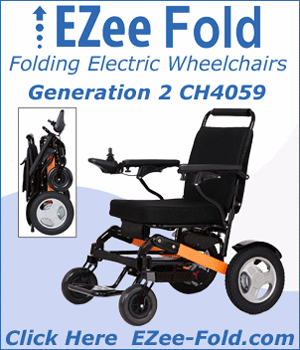Wheelchair & Scooter Battery Information

Wheelchair/Scooter Batteries
Battery Types
The most common reason for service calls on power wheelchairs and scooters is battery related. Over the years, batteries for mobility devices have improved greatly but they require proper care and maintenance to provide their best performance and longest lifespan.
Originally, all scooter batteries were wet cell batteries which required topping up of the battery acid from time to time and were prone to spilling if tipped over. The life spans of the early batteries were quite short. More recently the batteries have progressed from wet celled, to sealed wet cell (won't leak), to gel cell (lead acid is in gel form instead of liquid and the batteries are sealed). In addition to the changes in types, the quality has greatly improved to provide better performance.
Lithium batteries are the newest evolution of scooter batteries and although expensive can be cost effective over time. The advantages of lithium include 50% less weight, more even power throughout the time between charges and life expectancies of 4 to 10 times longer than lead acid batteries.
Automotive Batteries and Wheelchair batteries are not the same! Although they often look the same and automotive batteries will work, they won't work for long and it's unlikely you'll be allowed to return them. Wheelchair and scooter batteries are designed to give low amounts of power for a long period of time (all day). Automotive batteries are designed to give large amounts of power for a short period of time (minutes).
Battery Charging
Batteries that are overcharged, or undercharged, will not perform as well as they should. The travel range between charges and the lifespan of the batteries will be reduced in either case.
Your user manual is probably going to tell you to charge your batteries every night if you use your device every day. And if you are in your wheelchair or scooter all day traveling large distances you should absolutely charge your batteries every night.
If you only use your wheelchair/scooter around home daily and don't go long distances you might be able to get away with charging your batteries once or twice a week. You'll have a battery gauge and I usually tell people to charge their batteries when the gauge is showing half the charge has been used.
Batteries always have an ideal use/charge ratio where they will last the longest. Surprisingly, it's the batteries that are used the most that usually last the longest. If you run down a battery 5% every day and charge it up overnight for a year you may find that you can never get more than 5% of use before you need to charge it and battery life will be diminished. If you run down the battery 60% every day and charge it every night for a year you'll likely get at least 60% of use before having to recharge and the battery life will be longer. This is called battery memory and it's more common in older styles of batteries but can also apply to some degree in the newer styles of batteries.
Battery Chargers
All Scooters and electric wheelchairs are supplied with battery chargers. Because voltages can vary between mobility devices it's imperative that only the charger supplied with the device is used.
Most chargers will have lights or gauges to indicate the charger is on, working and to let you know when the charging is completed. Should there be a problem with the charging process you should be notified by these lights. Most chargers will not begin charging if the batteries have been charged too much but his is uncommon except in cases where the batteries are in particularly bad condition.
All chargers should be automatic and will stop charging when the batteries are fully charged so it will be safe to leave them charging overnight.
For specific information about how the charger works for your scooter or electric wheelchair, check your user manual or ask your dealer.
Battery Storage
For various reasons it may occur that your electric wheelchair or scooter is not going to be used for a long period of time. When not in use your batteries should be charged once a month. This charge keeps them active. If the batteries are not charged for a long period of time they can be either damaged or ruined.
Batteries should be stored in temperatures approaching room temperature give or take 10 degrees. If it's a scooter that won't be used over a winter you can store the scooter in a unheated garage or shed (as long as it will be dry) but the batteries should be brought into a heated area. If the batteries cannot be charged off the scooter then you'll want the scooter indoors too so you're not having to take them out to the scooter every time you need to charge them.
Battery Warranties
Almost all standard batteries for wheelchairs and scooters are warrantied by the battery manufacturer. The standard warranty is 6 months. The average life span of a battery is between 1 and 2 years but I have seen some give up at 6 months and, in rare cases, some have lasted 3, or even 4 years.
Some of the newer scooter and electric wheelchair batteries have specializes batteries that will only fit into specific products. These specialized batteries may be warranted by power wheelchair or scooter manufacturer and have different warranties and terms.
Battery Replacement
Many scooters and wheelchairs have two batteries. If you should check each battery and find that one is not working, but the other is, you'd probably be inclined to just replace the one battery.
This is false economy as the "good" battery is probably not far from failing itself and pairing it with a new battery will add extra load on the better battery will cause it's lifespan to be shortened. In the end you'll end up replacing both the new and old battery sooner rather than later


 Online Vendors
Online Vendors  US Online Vendors
US Online Vendors 
